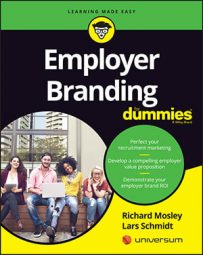Mapping out media options for your employer brand
Newspaper advert? Radio ad? Podcast sponsorship? Targeted social ads? Today’s world of recruitment media provides more options than ever before, but all these options dilute the impact and reach of any one option.To optimize the return on your recruitment advertising expenditures, you need to be tactical in your choice of which media options to use. Options range from traditional (including newspapers, magazines, radio, TV, billboard, and event advertising) to digital (such as search engines, websites, blogs, social networks, search engine marketing, podcasts, job boards, and email).
Assuming you created talent personas, you should have a pretty clear idea of your targeted talent’s media preferences, including what they read and what social networks they use. Mapping your media options is then just a matter of matching options to target personas.
To map media options to talent personas, you have the following three options:
- Do it yourself. Small to midsize companies typically choose media options themselves, using options that worked for them in the past or following their intuition.
- Buy programmatic media. Programmatic media buying involves using technology and optimized algorithms to purchase media across different channels. Work through a media broker, such as Rocket Fuel to determine which media options will be most effective.
- Work with a recruitment advertising agency. Team up with a recruitment advertising agency, such as TMP or HireClix, to help you set up your recruitment marketing ads and decide on optimum ad placement. This option is often preferred by large companies with ample budgets.
Certain channels are cost-effective standards that all or most companies invest in, including social networking sites such as LinkedIn and Glassdoor. Investing in your own career website is also essential.
Reaching people on the move (mobile) with your employer brand
Today’s media is designed for a mobile-first world, and modern recruitment advertising must take this fact into consideration. Just look at the numbers:- A majority of the people you’re likely to be recruiting plan to use their mobile devices as they search for jobs. Here’s a breakdown of U.S. mobile usage for job search by age group from Indeed:
- Ages 16 to 34: 77 percent
- Ages 35 to 44: 72 percent
- Ages 45 to 54: 54 percent
- Ages 55 and over: 35 percent
- Nine out of ten job seekers will use their mobile devices during the job search process in the next 12 months, as reported by Glassdoor.
- Ninety-three percent of the consumers in emerging markets and 78 percent in developed markets look at their phones within an hour or less of waking up, as reported by Deloitte.
Here are a few suggestions on how to tailor your recruitment marketing for mobile users:
- Keep copy minimal and to the point. You don’t want to make readers scroll more than necessary.
- Pick visuals that aren’t overly detailed. If the images are too detailed, the fidelity and impact will be lost on a small screen.
- If you use video in your recruitment marketing campaign, limit each clip to less than a minute. That way, users on a mobile device can view on the go.
- When developing your career website and other online properties, use a responsive design. With responsive design, the content looks good and is accessible regardless of the size of the screen it’s viewed on (desktop, laptop, tablet, smartphone, and so on). Responsive design also helps with search engine optimization (SEO).
Connecting your employer brand with active and passive job seekers
Recruiters get enamored with the passive job seeker, as if there is an automatic assumption that actively looking for a job makes for a less desirable hire. This assumption is becoming less valid, as the following evidence suggests:- Passive job seekers are open to discussing opportunities. According to LinkedIn, 75 percent of over 18,000 fully employed survey respondents from 26 countries consider themselves passive job seekers. When you dig deeper into how they respond to questions about being approached for new opportunities, 85 percent would be open to a conversation.
- Passivity fluctuations with the changing job market. As the market conditions decline, workers prefer stability and may be less inclined to leave their companies (providing they feel a sense of security there). As the economy strengthens, employees feel more confident about taking risks and changing jobs. This shifts the active/passive paradigm in a cyclical, somewhat predictable, way.
- Passive can change to active in the blink of a social message. In the age of social media, everyone is a prospect. Truly passive candidates, including the 15 percent from the LinkedIn study, may have no reason to visit a job board or your career site, but that doesn’t prevent them from stumbling across one of your employer branded videos on Twitter or Snapchat. If they find that content compelling and interesting, and happen to see it on their way out of a rough meeting with their manager, they may be compelled to click that Apply button. That’s passive to active at the speed of social.
Approach employer branding with the mind-set of convincing passive candidates to jump ship and join your organization. Presumably, you have to work harder to convince passive candidates to consider your opportunities because of their “passive” status. If your branding efforts are strong enough to convert that audience, they should be strong enough to convince “active” candidates as well. This approach can help simplify your branding efforts.

